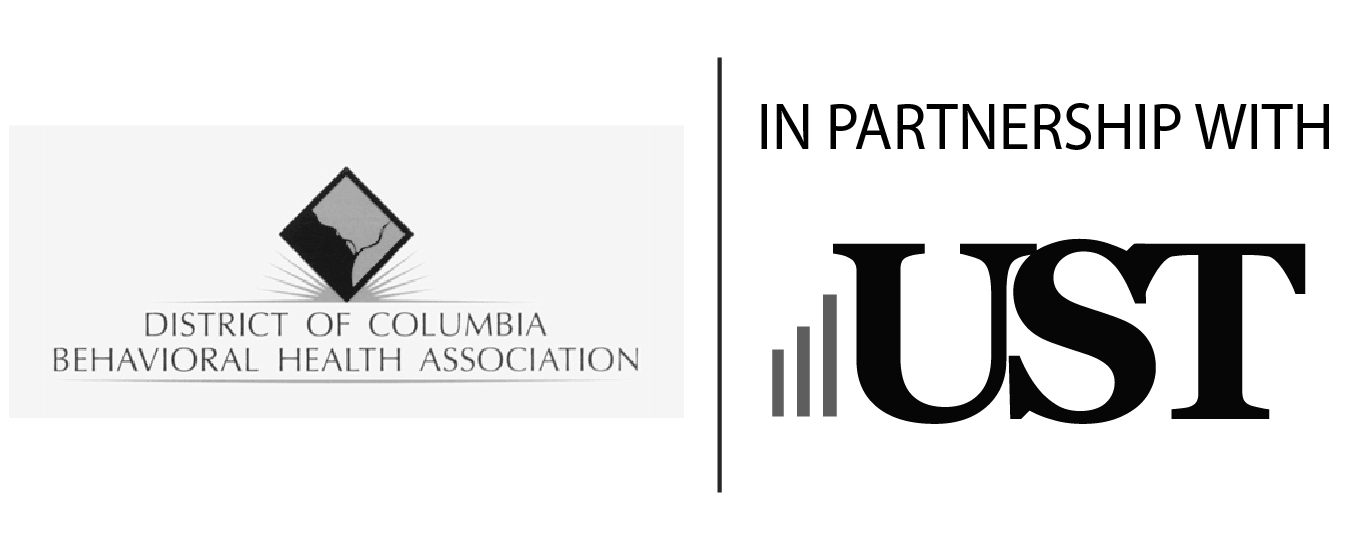

What does that mean? Well, by federal law, 501(c)(3)s are allowed to opt-out of paying taxes into their state unemployment tax fund, and instead only reimburse the state if and when they have an actual unemployment claim, dollar-for-dollar.
It can be a savings opportunity for many nonprofits who have lower claims than what they pay in state unemployment taxes—which are often driven up by for-profits and other companies that go out of business, as well as state fund deficits and improper payments made in error.
The Unemployment Services Trust (UST) performed more than 200 free unemployment tax savings evaluations for nonprofits with 10 or more employees in 2013, finding a total of $3,532,485.26 potential unemployment tax savings if they were to exercise their exemption and join the UST program instead.
This year, UST is aiming to identify more than $7 million in unemployment tax savings for nonprofits through free savings evaluations. But time is running out. Most states have a December 1 opt-out deadline, so UST needs all savings evaluation forms submitted before November 15th at the latest in order to meet the state deadline.
You can view your state’s unemployment tax exemption deadline here: www.chooseust.org/state-unemployment-tax-opt-out-deadlines-for-nonprofits
Unfortunately, if a nonprofit misses the state deadline, they have to wait until the following year to exercise their exemption and join the Unemployment Services Trust. So if you or a nonprofit you know has not exercised their exemption, be sure to share the free savings evaluation before the November 15th deadline: www.chooseust.org/request-a-savings-quote

Utilize these 4 methods to create a more balanced and productive workplace:
As a nonprofit leader, you have the power to portray change as a necessary evil or an ongoing opportunity. By setting a positive example and carefully managing both your nonprofit’s goals and employees, you can encourage your staff to constantly challenge themselves and broaden their skill sets—increasing overall organizational effectiveness.
Learn more about how to improve leadership and management practices here.

On the other hand, the FMLA does not require that employees on FMLA leave be allowed to accrue benefits or seniority. For example, an employee on FMLA leave might not have sufficient sales to qualify for a bonus. The employer is not required to make any special accommodation for this employee because of the FMLA. The employer must, of course, treat an employee who has used FMLA leave at least as well as other employees on paid and unpaid leave (as appropriate) are treated.
Therefore, if the bonus is based purely on the company’s performance without specific individual employee productivity metrics to qualify that employee for the bonus, then the employee on leave would be entitled to such a bonus.
The bonus would likely not impact the disability payments, but it is best to check with the specific plan documents or with the carrier to determine what, if any, impact it may have.
Question and Answer provided by ThinkHR. Learn more about how your nonprofit can gain access to their expert HR staff here.

The Unemployment Services Trust (UST) is pleased to announce its new affinity partnership with the District of Columbia Behavioral Health Association. The D.C. Behavioral Health Association has chosen to pair up with UST to help their member organizations reduce unemployment costs and direct more funds toward mission advancement objectives.
This new partnership will allow 501(c)(3) organizations with 10 or more employees in the D.C. community to better take advantage of the federal law that allows nonprofits to opt out of the state unemployment tax system. By paying only the dollar-for-dollar cost of unemployment benefits paid to former employees, nonprofit employers that join UST lower their average claims cost to just $2,287 per claim versus the national average of $5,174 per claim.
“Nonprofits are often faced with smaller budgets and limited resources,” said Donna Groh, Executive Director of UST. “But last year, UST helped members achieve over $32.5 million in unemployment claims savings. We are thrilled to have the D.C. Behavioral Health Association join us as our latest Affinity Partner and look forward to helping their members maintain HR best practices and lower their unemployment costs.”
About D.C. Behavioral Health Association: D.C. Behavioral Health Association aims to expand and improve community-based behavioral health services through policy advocacy and staff development. All 42 members offer extensive services to the D.C. housing supports for adults and children in foster care, including treatments for substance abuse and mental health. For more information, visit www.dcbehavioralhealth.org.
About UST: The Unemployment Services Trust is dedicated to educating 501(c)(3)s about controlling HR and unemployment costs and helping them exercise their federal right to reimburse for unemployment claims, dollar-for-dollar. UST helps nonprofits manage unemployment claims to successfully save thousands of dollars annually. Learn more at www.ChooseUST.org.

1. Get discounts by joining a nonprofit association. You can find one here. Most associations offer their members special benefits and discounts on everything from office supplies to insurance. In fact, UST is partnered with 80 national and state nonprofit associations whose members receive a waived enrollment fee when they join UST.
2. Get group discounts and share resources. If you can combine orders with other nonprofits or companies you work with or who share your building, you’ll receive better bulk pricing on all kinds of products. You can also share the costs of maintenance with others in the same building. You may even consider piggybacking on local businesses by asking if you can include your fundraising materials in their mailings. They may welcome the good will it generates for their company.
3. Is your organization a 501(c)(3)? Are there 10 or more full-time employees? If you answered yes to both, be sure to check out UST’s alternative to paying into the state unemployment tax system. It can save thousands annually because you no longer share in the state’s pooled tax system that is often driven by for-profit companies’ unemployment claims. Watch the one-minute informational video.
4. Save on printing. Today most people are used to receiving electronic communications in lieu of bulky printed pieces in the mail. Direct mail may still be an important part of your fundraising, but perhaps you can move to an e-newsletter to cut down on printing or provide electronic versions of your board book for board meetings. You can also use lower-weight paper to reduce printing and postage costs.
5. Try teleconferencing more often. Sometimes a video or phone conference is all you need to nail down specifics of a discussion, and it will save you big time on travel costs. (It works for job candidates and board members too!)
6. Save on employee training. Use videos, online training and/or another employee to provide training to new and existing employees. Self-paced training is typically best received by employees. And if you’re already a member of UST, you receive hundreds of online training courses for free through ThinkHR, which saves you about $6,000 annually.
7. Use public relations and social media to get free publicity. Talk to local media about covering an upcoming event, or provide guest columns or blogs to be published. And yes, you must be in the Twitter-verse nowadays for free PR. Don’t have an expert on staff? Recent college grads are a good place to look for social media expertise. Just make sure for interns or new hires that you create a social media policy so they don’t accidentally tarnish your reputation.
8. Use your board. Your board members should be part of your fundraising strategy. They should be able to help find sponsors for your events, and they shouldn’t be afraid to make the “ask” during fundraising season. In addition, they should be helping you find service providers and individuals who can provide the goods and services you need.
Got more ideas? Tell us on Facebook!

Although we always suggest starting your search for free or reduced cost supplies and services by talking to state and national associations (check out our 80+ association partners here), sometimes you need more.
Looking for extra technology resources?
Check out Techsoup, Google for Nonprofits, Microsoft’s Technology for Good program, the Salesforce Foundation, and Citrix, all of which provide free or discounted tech services to nonprofits.
Looking for financial management help?
Check out The Wallace Foundation, which offers helpful resources on planning, monitoring, operations, and governance.
Also check out 501Commons, which has assembled a vast library of tools & best practices for nonprofits, and the Nonprofits Assistance Fund which was specifically created with the goal of helping other nonprofits thrive.
Want to help your employees achieve their professional dev elopment goals?
The Stanford Social Innovation Review makes select webinars for professional development available for free. And, since the Review is constantly adding new things, they offer a great way to continuously access up-to-date information and resources.
Need nonperishables like apparel, books, toys, personal care products, or office and school supplies?
Good360 has been helping connect companies with nonprofits that need inventory that the retailer has found to be slow-moving, obsolete, and seasonal since 1983. Now, Good360 is considered the nonprofit leader in product philanthropy and distributes goods on behalf of America’s top brands.
Still need more?
Other sites like Grassroots.org, which provides information about free resources to help charities, provide a wide array of resources in one place from team collaboration tools to project tools to marketing and administrative tools. Similarly, the Foundation Center provides a resource called the “Nonprofit Startup Map” which localizes links to state resources on a state-by-state U.S. map.
Want more free resources? Run a quick Google Search for the term “free resources for nonprofits” and see what you come up with!

These mistakes can be costly if you’re not careful; think compliance penalties, litigation, unemployment costs and employee replacement costs. We’ve listed some of the most common mistakes so you can try to avoid them at your nonprofit.
1. Bad Hiring Decisions
In the nonprofit world, you’re likely to know just about everyone who works in the same circle. So it makes sense that to offer a job to someone you know, right? Well sometimes skipping the interviewing step means you’re missing out on the most qualified candidate, and missing important information. Interviews, background checks and references are absolutely a must when it comes to hiring the right person. The wrong person for a position can be costly, since you may have to pay unemployment if you have to replace them, and the cost in both time and money to find a replacement quickly adds up.
2. Not Documenting Infractions
It’s not easy addressing performance or company policy concerns with an employee. Although it can be uncomfortable, it’s much more uncomfortable to have to address these issues in an unemployment claim appeal hearing when you try to prove the employee was discharged for cause. The first steps are having clear performance expectations in your job descriptions as well as an employee handbook outlining organizational policies. Then create a performance review to discuss any concerns with an employee, and address the steps they can take to improve. And any infractions must be documented in writing, including:
Finally, don’t wait to have the conversation! It’s easiest to provide immediate feedback and point to a distinct occurrence rather than try to explain later on “Remember that one time…” Do it now, and you’ll thank yourself later.
3. Not Knowing Basic HR Rules
If you don’t have someone with acute knowledge of the laws around the following HR laws, make sure you get acquainted with the rules or have a certified HR professional to help you:
Ignoring these laws can lead to costly legal concerns and thousands of dollars wasted. Download the 36 Critical HR Processes, and learn more about UST’s live hotline with SPHR and PHR certified HR professionals.
4. Not Knowing the Difference Between Contracted, Volunteer, Part-Time, and Full-Time Employees
The U.S. DOL has strict rules around Independent Contractors and Volunteers. Not only do you need to be aware of the rules around pay and benefits, you should know who is eligible to collect unemployment benefits. Independent contractors may file for unemployment, and you need to be able to prove he or she is not an employee of your company.
Here at UST we know it’s not easy managing the most important part of your organization: your human capital. Having the right employees can make or break your mission, and so can following the proper HR procedures. Interested in learning more about our tools for nonprofits? Find out about Unemployment Claims Administration and our HR Hotline.

Setting measurable goals and creating systematic procedures for leadership development programs will enable you to address leadership skill gaps at a more efficient pace. Follow these 4 steps to implement an effective leadership development plan, while gaining support from your current management team:
Discover more methods on how to create future leaders here.

But finding and hiring highly engaged employees is difficult. You might ask – How can an employee be “engaged” before they’re even hired? Well, the highly engaged employee is often a person who simply leans in that direction in all parts of their life. That’s why finding them is so important for your nonprofit – because it’s easier to help an engaged employee thrive than to try to build one from the ground up.
Here are some signs of a motivated personality when you’re looking at hiring, or even internal development:
1. They don’t expect their organization or their leaders to provide all the stimulation in their workday or their job. They seek out new opportunities to engage in their job on their own. Complaining about a former manager or job not providing enough work satisfaction in an interview can be a red flag that they didn’t take that extra step to engage themselves at their previous job.
2. They know their performance speaks for itself, and they’re not worried about what their organization can give them, but rather about what they can give to their organization. They have a low sense of entitlement. (Although rewarding and recognizing them is important to keeping them engaged!)
3. They help inspire others to love your mission, including clients and volunteers. They can’t help but be excited about what they’re doing and that translates to others.
4. They are engaged despite the conditions around them. Even if their last job wasn’t perfect, they found ways to be engaged. And even motivation in other places of their life can show an “engaged” personality – like running a 5k to help a local dog shelter. Your job is simply to foster this engagement at work.
5. They enjoy shaping their own outcomes – and the outcomes of your organization. Being a voice in the direction of your organization, whether it’s something small like finding a better way to file invoices, or more strategic like new ideas for an annual campaign, they will feel happiest when they can give something to your organization.
6. They like to stretch the limits. This can be uncomfortable for leaders, but allowing engaged employees to think outside of the box can lead to some amazing results. And sometimes listening and showing you are truly interested in their input, even if it doesn’t get used in the end, shows that this behavior is not only welcome, it’s appreciated – and it should be!

UST maintains a secure site. This means that information we obtain from you in the process of enrolling is protected and cannot be viewed by others. Information about your agency is provided to our various service providers once you enroll in UST for the purpose of providing you with the best possible service. Your information will never be sold or rented to other entities that are not affiliated with UST. Agencies that are actively enrolled in UST are listed for review by other agencies, UST’s sponsors and potential participants, but no information specific to your agency can be reviewed by anyone not affiliated with UST and not otherwise engaged in providing services to you except as required by law or valid legal process.
Your use of this site and the provision of basic information constitute your consent for UST to use the information supplied.
UST may collect generic information about overall website traffic, and use other analytical information and tools to help us improve our website and provide the best possible information and service. As you browse UST’s website, cookies may also be placed on your computer so that we can better understand what information our visitors are most interested in, and to help direct you to other relevant information. These cookies do not collect personal information such as your name, email, postal address or phone number. To opt out of some of these cookies, click here. If you are a Twitter user, and prefer not to have Twitter ad content tailored to you, learn more here.
Further, our website may contain links to other sites. Anytime you connect to another website, their respective privacy policy will apply and UST is not responsible for the privacy practices of others.
This Privacy Policy and the Terms of Use for our site is subject to change.
UST maintains a secure site. This means that information we obtain from you in the process of enrolling is protected and cannot be viewed by others. Information about your agency is provided to our various service providers once you enroll in UST for the purpose of providing you with the best possible service. Your information will never be sold or rented to other entities that are not affiliated with UST. Agencies that are actively enrolled in UST are listed for review by other agencies, UST’s sponsors and potential participants, but no information specific to your agency can be reviewed by anyone not affiliated with UST and not otherwise engaged in providing services to you except as required by law or valid legal process.
Your use of this site and the provision of basic information constitute your consent for UST to use the information supplied.
UST may collect generic information about overall website traffic, and use other analytical information and tools to help us improve our website and provide the best possible information and service. As you browse UST’s website, cookies may also be placed on your computer so that we can better understand what information our visitors are most interested in, and to help direct you to other relevant information. These cookies do not collect personal information such as your name, email, postal address or phone number. To opt out of some of these cookies, click here. If you are a Twitter user, and prefer not to have Twitter ad content tailored to you, learn more here.
Further, our website may contain links to other sites. Anytime you connect to another website, their respective privacy policy will apply and UST is not responsible for the privacy practices of others.
This Privacy Policy and the Terms of Use for our site is subject to change.
UST wants to honor all the nonprofits that make a difference every day, all year long—and the amazing individuals that lead them.
We know it’s not easy running a nonprofit and here at UST our sole purpose is to “help nonprofits save money in order to advance their missions.” We’re especially proud to support the efforts of our 2,000 nonprofit members and 80 national and state nonprofit association affinity partners.
For Nonprofit Awareness Month, we wanted to share some ways individuals and nonprofits can boost their passions and causes, and gain awareness of all that nonprofits do, too:
– I am [Your Name] and I work for [Organization]. Our nonprofit employs [x] people and mobilize [y] volunteers in your district.
– Our missionj is to [Your Mission].
– We can be a resource for you on[Topics]. Please call on us if we can be of assistance.
– We would also like for you to be our guest at [Your Organization] when you are in the district. Please contact me or I am happy to follow up with you to see if we can schedule something.
Do you have a favorite nonprofit? Tell us on Facebook
Note: UST does not receive compensation for any links in this article, nor is it responsible for the content on any of the sites to which it links. This is purely educational folks!